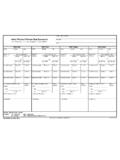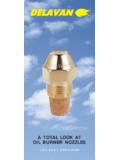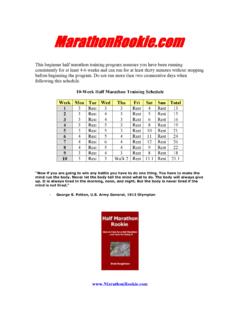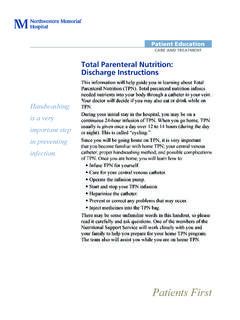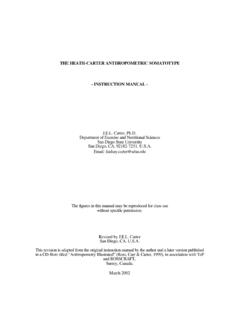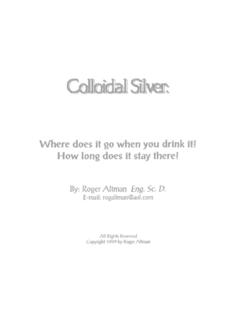Transcription of Enteral Nutrition & Total Parenteral Nutrition
1 Enteral Nutrition & Total Parenteral Nutrition All infusion therapies have been covered except for two: Enteral Nutrition Therapy and Total Parenteral Nutrition Therapy. These are the two most difficult therapies to learn, both from a clinical perspective and from a collections perspective. Enteral Nutrition THERAPY Healthy individuals consume a solid food diet and receive Nutrition by mouth through swallowing and then digesting food. However, individuals that are unable to obtain Nutrition by swallowing can receive Enteral Nutrition or Tube Feeding.
2 Enteral Nutrition /Tube Feeding is the medical treatment of giving Nutrition by passing a liquid diet through a tube into the stomach or intestines. During some illnesses, the body may require increased nutrients to meet its demands for physical repair and to restore itself to health. Depending on the circumstance, a person may even receive tube feedings and be able to eat at the same time. The tube feeding must be in liquid form for individuals to obtain the same nutrients that are found in solid foods.
3 Liquid Nutrition is available in two forms: A Ready To Use Liquid Formula A Powder That Must Be Mixed With Water A few examples of Enteral Formula are: Ensure Isosurce Jevity 1 cal and Jevity Osmolite , and Promote Glucerna Peptamen Nepro Some patients, particularly the elderly, drink Enteral formulas in order to obtain the necessary nutrients needed to gain weight, maintain present weight or prevent further weight loss. In this example, the Enteral formula is used as a dietary supplement.
4 Although some Enteral formulas can be readily found in the local grocery store, most of the more specialized Enteral formulas can only be obtained through a prescription from a physician. Enteral formulas are assigned an NDC number (National Drug Code) just like a drug, and have an assigned AWP price, just like a drug. Other patients who cannot swallow food normally receive an Enteral formula as the sole (only) source of Nutrition . In these cases, there is a malfunction or disease that necessitates bypassing the swallowing of food.
5 Typically, these patients are fed by a tube placed directly into the stomach or intestines. The following are the most common diagnoses for Enteral Nutrition : 1. Dysphagia Difficulty in Swallowing 2. Cancer of Head or Neck (usually cancer of mouth or throat) 3. Esophageal Obstruction Obstruction in Esophagus Common ICD-9 codes for the above mentioned diagnoses are: and Dysphagia Cancer of the Head or Neck Esophageal Obstruction- Obstruction in Esophagus There are many other indicators for Enteral Nutrition .
6 Patients who have a central nervous system disease may require Enteral Nutrition during the late stages of the disease. Patients who are in a vegetative state and are continuously on a ventilator will normally require tube feeding to sustain life. The type of feeding tube that an Enteral patient has can be compared to the kind of IV line an infusion patient has. There are four main feeding tubes: 1. G Tube (Gastrostromy Tube) 2. NG Tube (Naso-Gastrostomy Tube) 3. J Tube (Jejunostomy Tube) 4.
7 Mic-Key (Gastostromy Tube) Some feeding tubes are placed through the nose and some are placed through the abdomen. There are three methods of administration for Enteral Therapy: 1. Gravity 2. Pump 3. Syringe (Bolus) Formulas are placed in a bag and hung on an IV pole when utilizing the gravity method. Pump feedings are also placed in a bag and infused over a scheduled length of time to regulate the flow of Nutrition . The feedings may also be given via a very large syringe, which is inserted into the tube placed in the abdomen.
8 This is also known as the bolus method. The most important point to remember regarding Enteral therapy as the sole source of Nutrition is its necessity to sustain life. A few examples of Enteral Pumps are: CADD Prizm Pump Infinity Pump Patrol Pump All pumps that are used have a determined pump rate that is set on them for the Enteral formula to be administered, 65 ml/hr. Total Parenteral Nutrition (TPN) Total Parenteral Nutrition , hyperalimentation, is usually called TPN for short. TPN is probably the single most expensive infusion therapy.
9 It supplies all of the body s daily nutritional needs (hence the term Total ). Certain disease states or conditions require Nutrition in order to prevent malnutrition. Parenteral support is only considered when oral or Enteral (tube feeding) supplementation is impossible, or when the absorptive or functional capacity of the gastrointestinal tract is inadequate to meet the nutritional needs of the patient. In general, Parenteral Nutrition is required for patients who cannot absorb nutrients through the normal digestive process.
10 Patients who have had a massive bowel resection, commonly called Short Bowel or Short Gut Syndrome; do not have enough intestines to allow for normal absorption of nutrients. Diseases of the small intestine, radiation enteritis (inflammation of the intestine due to radiation therapy for cancer treatment), and moderate to severe pancreatitis with severe diarrhea and Hyperemesis (uncontrolled vomiting) can all require the application of TPN therapy. TPN is usually administered through a catheter placed into a large vein, such as a central line catheter (also known as a Hickman or Groshong).



